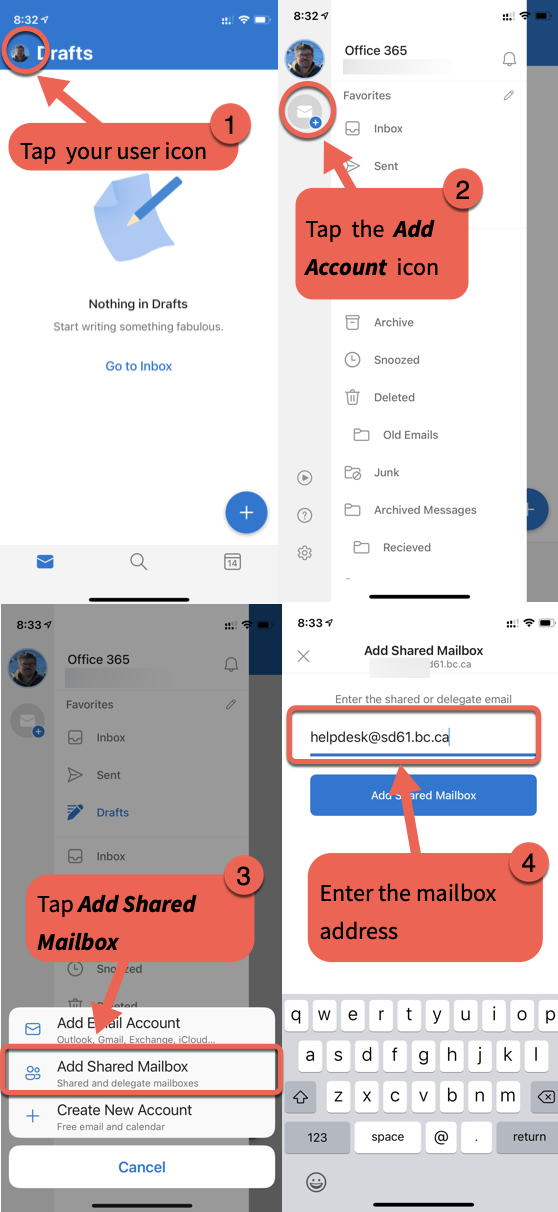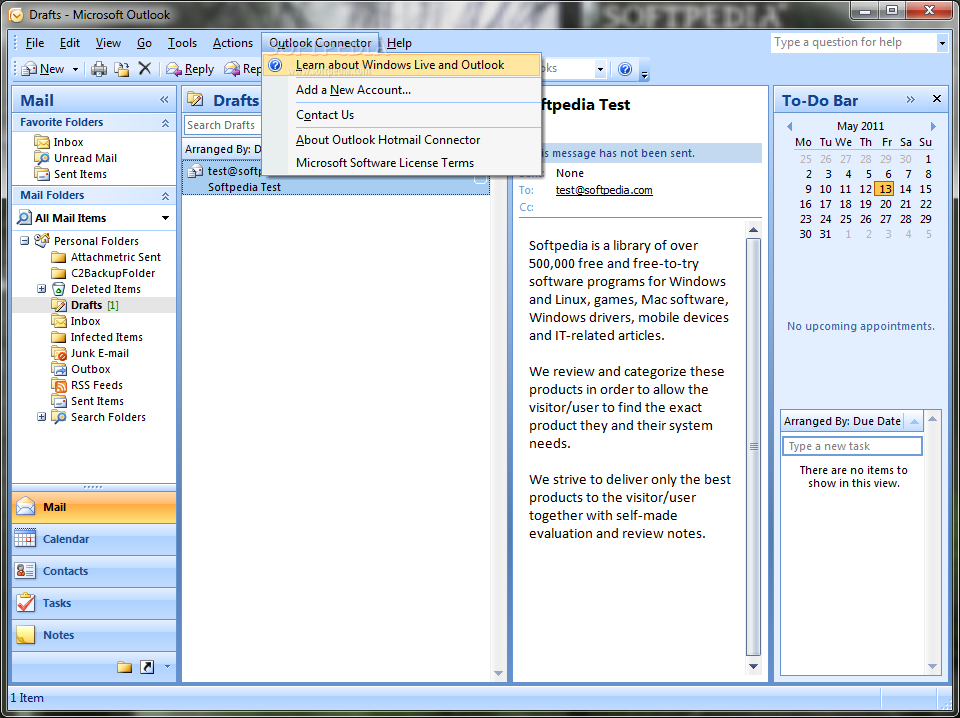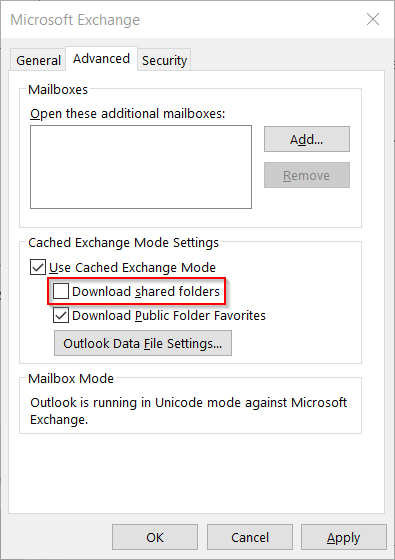Add-ins are not activated for delegate mailboxes either, which are licensed mailboxes. In fact, I have several mailboxes set-up in my Outlook and add-ins only activate for the 'primary' mailbox. Pretty frustrating given the additional spend we will now have to make on older tech to support shared mailboxes. For more detailed instructions see; Adding an additional or shared mailbox from the same Exchange organization to Outlook. Workarounds for delegate mailboxes If this is a mailbox for which you only have limited access (for instance, only access to the Calendar, Contacts and Inbox folder) rather than full access, then you are a bit out of luck.
- Add Shared Mailbox To Outlook Owa
- Add Shared Mailbox To Outlook Mac 2021
- Add Shared Mailbox To Outlook 2013
- Add Shared Mailbox To Outlook App
- Add Shared Mailbox To Outlook Web App
After you have created a shared mailbox, you'll want to configure some settings for the mailbox users, such as email forwarding and automatic replies. Later, you might want to change other settings, such as the mailbox name, members, or member permissions.
Change the name or email alias of a shared mailbox, or change the primary email address
In the admin center, go to the Groups > Shared mailboxes page.
Select the shared mailbox you want to edit, and then select Edit next to Name, Email, Email aliases.
Enter a new name, or add another alias. If you want to change the primary email address, your mailbox must have more than one email alias.
Select Save.

Forward emails that are sent to a shared mailbox
You do not need to assign a license to the shared mailbox in order to forward email that's sent to it. You can forward the messages to any valid email address or distribution list.
In the admin center, go to the Groups > Shared mailboxes page.
Select the shared mailbox you want to edit, then select Email forwarding > Edit.
Set the toggle to On, and enter one email address to forward the messages to. It can be any valid email address. To forward to multiple addresses, you need to create a distribution group for the addresses, and then enter the name of the group in this box.
Select Save.
Send automatic replies from a shared mailbox
In the admin center, go to the Groups > Shared mailboxes page.
Select the shared mailbox you want to edit, then select Automatic replies > Edit.
Set the toggle to On, and choose whether to send the reply to people inside your organization or outside your organization.
Enter the reply you want to send to people inside your organization. You can't add images, only text.
If you want to also send a reply to people outside your organization, select the check box, who you want to get the reply, and type the text. There's no way to only send to people outside your organization but not to people inside your organization.
Select Save.
Allow everyone to see the Sent email (the replies)
By default, messages sent from the shared mailbox aren't saved to the Sent Items folder of the shared mailbox. Instead, they are saved to the Sent Items folder of the person who sent the message.
If you want to allow everyone to see the Sent email, in the admin center, edit the shared mailbox settings, and select Sent items > Edit.
Choose the apps that a shared mailbox can use to access Microsoft email
In the admin center, go to the Groups > Shared mailboxes page.
Select the shared mailbox you want to edit, then select Email apps > Edit.
Set the toggle to On for all of the apps you want members to be able to use to access the shared mailbox. Set the toggle to Off for any apps you don't want them to use.
Select Save.
Put a shared mailbox on litigation hold
To learn more about litigation hold, see Create a Litigation Hold.
In the admin center, go to the Groups > Shared mailboxes page.
Select the shared mailbox you want to edit, then select Litigation hold > Edit.
Set the toggle to On.
Optionally, enter a duration, s note about the hold, and a URL with more information.
Select Save.
Add Shared Mailbox To Outlook Owa
Add or remove members
In the admin center, go to the Groups > Shared mailboxes page.
Select the shared mailbox you want to edit, then select Members > Edit.
Do one of the following:
- To add members, select Add members, search for or select a member to add, and then select Save.
- To remove members, use the Search box to search for the member if necessary, select the X next to the member's name, and then select Save.
Select Save again.
Add or remove permissions of members
In the admin center, go to the Groups > Shared mailboxes page.
Select the shared mailbox you want to edit, then select Members > Customize permissions.
Select Edit next to the permission you want to change for a member.
Do one of the following:
- To give that permission to an additional member, select Add permissions, search for or select a member to add, and then select Save.
- To remove the permission from a member, use the Search box to search for the member if necessary, select the X next to the member's name, and then select Save.
Select Save again.
Show or hide a shared mailbox in the global address list
If you choose not to show the shared mailbox in the global address list, the mailbox won't appear in your organization's address list, but it will still receive email sent to it.
In the admin center, go to the Groups > Shared mailboxes page.
Select the shared mailbox you want to edit, then select Show in global address list > Edit.
Set the toggle to On or Off.
Select Save.
Note
Hiding a shared mailbox from address list will make it impossible for new shared mailbox members to add the hidden mailbox to their Outlook profile until the shared mailbox is again shown in the address list.
Related content
About shared mailboxes (article)
Create a shared mailbox (article)
Convert a user mailbox to a shared mailbox (article)
Remove a license from a shared mailbox (article)
Resolve issues with shared mailboxes (article)
Note
If your organization uses a hybrid Exchange environment, you should use the on-premises Exchange admin center (EAC) to create and manage shared mailboxes. See Create shared mailboxes in the Exchange admin center
If you're not sure if you should create a shared mailbox or a Microsoft 365 group for Outlook, see Compare groups for some guidance. Note that currently, it's not possible to migrate a shared mailbox to a Microsoft 365 group. If this is something you want, let us know by voting here.
It's easy to create shared mailboxes so a group of people can monitor and send email from a common email addresses, like info@contoso.com. When a person in the group replies to a message sent to the shared mailbox, the email appears to be from the shared mailbox, not from the individual user.
Shared mailboxes include a shared calendar. A lot of small businesses like to use the shared calendar as a place for everyone to enter their appointments. For example, if you have 3 people who do customer visits, all can use the shared calendar to enter the appointments. This is an easy way to keep everyone informed where people are.
Before creating a shared mailbox, be sure to read About shared mailboxes for more information.
Create a shared mailbox and add members
- Sign in with a global admin account or Exchange admin account. If you get the message 'You don't have permission to access this page or perform this action,' then you aren't an admin.

- In the admin center, go to the Groups > Shared mailboxes page.
- In the admin center, go to the Groups > Shared mailboxes page.
- In the admin center, go to the Groups > Shared mailboxes page.
On the Shared mailboxes page, select + Add a mailbox. Enter a name for the shared mailbox. Then the wizard chooses the email address, but you can edit it.
Select Add. It may take a few minutes before you can add members.
Under Next steps, select Add members to this mailbox. Members are the people who will be able to view the incoming mail to this shared mailbox, and the outgoing replies.
Select the +Add members button. Put a check mark next to the people who you want to use this shared mailbox, and select Save.
Select Close.
You have a shared mailbox and it includes a shared calendar. Now go on to the next step: block sign-in for the shared mailbox account.

Which permissions should you use?
You can use the following permissions with a shared mailbox:
Add Shared Mailbox To Outlook Mac 2021
Full Access: The Full Access permission lets a user open the shared mailbox and act as the owner of that mailbox. After accessing the shared mailbox, a user can create calendar items, read, view, delete, and change email messages, and create tasks and calendar contacts. However, a user with Full Access permission can't send email from the shared mailbox unless they also have Send As or Send on Behalf permission.
Send As: The Send As permission lets a user impersonate the shared mailbox when sending mail. For example, if Katerina logs into the shared mailbox Marketing Department and sends an email, it will look like the Marketing Department sent the email.
Send on Behalf: The Send on Behalf permission lets a user send email on behalf of the shared mailbox. For example, if John logs into the shared mailbox Reception Building 32 and sends an email, it will look like the mail was sent by 'John on behalf of Reception Building 32'. You can't use the EAC to grant Send on Behalf permissions, you must use the Set-Mailbox cmdlet with the GrantSendonBehalf parameter.
Use the EAC to edit shared mailbox delegation
In the EAC, go to Recipients > Shared. Select the shared mailbox, and then select Edit .
Select Mailbox delegation.
To grant or remove Full Access and Send As permissions, select Add or Remove and then select the users you want to grant permissions to.
Note
The Full Access permission allows a user to open the mailbox as well as create and modify items in it. The Send As permission allows anyone other than the mailbox owner to send email from this shared mailbox. Both permissions are required for successful shared mailbox operation.
Select Save to save your changes.
Block sign-in for the shared mailbox account
Every shared mailbox has a corresponding user account. Notice how you weren't asked to provide a password when you created the shared mailbox? The account has a password, but it's system-generated (unknown). You aren't supposed to use the account to log in to the shared mailbox.
But what if an admin simply resets the password of the shared mailbox user account? Or what if an attacker gains access to the shared mailbox account credentials? This would allow the user account to log in to the shared mailbox and send email. To prevent this, you need to block sign-in for the account that's associated with the shared mailbox.
- In the admin center, go to the Users > Active users page.
- In the admin center, go to the Users > Active users page.
- In the admin center, go to the Users > Active users page.

In the list of user accounts, find the account for the shared mailbox (for example, change the filter to Unlicensed users).
Select the user to open their properties pane, and then select the Block this user icon .
Note: If the account is already blocked, Sign in blocked will appear at the top and the icon will read Unblock this user.
In the Block this user? pane, select Block the user from signing in, and then select Save changes.

Add Shared Mailbox To Outlook 2013
For instructions on how to block sign-in for accounts using Azure AD PowerShell (including many accounts at the same time), see Block user accounts with Office 365 PowerShell.
Add the shared mailbox to Outlook
If you have automapping enabled in your business (by default, most people do), the shared mailbox will appear in your user's Outlook app automatically after they close and restart Outlook.
Automapping is set on the user's mailbox, not the shared mailbox. This means if you try to use a security group to manage who has access to the shared mailbox, automapping won't work. So, if you want automapping, you have to assign permissions explicitly. Automapping is on by default. To learn how to turn it off, see Remove automapping for a shared mailbox.
To learn more about shared mailboxes in Outlook, see:
Use a shared mailbox on a mobile device (phone or tablet)
You can access a shared mailbox on a mobile device in two ways:
Add the shared mailbox in the Outlook for iOS app or the Outlook for Android mobile app.
For instructions, see Add a shared mailbox to Outlook mobile.
Open your browser, sign in, and then go to Outlook on the web. From Outlook on the web you'll be able to access the shared mailbox.
For instructions, see Add a shared mailbox to Outlook on the web.
Note
Add Shared Mailbox To Outlook App
Shared mailbox can only be added to Outlook for iOS app or the Outlook for Android mobile app
Use the shared calendar
When you created the shared mailbox, you automatically created a shared calendar. We like the shared mailbox calendar rather than a SharePoint calendar for keeping track of appointments and where people are. A shared calendar is integrated with Outlook and it's much easier to use than a SharePoint calendar.
In the Outlook app, go to calendar view, and select the shared mailbox.
When you enter appointments, everyone who is a member of the shared mailbox will be able to see them.
Any member of the shared mailbox can create, view, and manage appointments on the calendar, just like they would their personal appointments. Everyone who is a member of shared mailbox can see their changes to the shared calendar.
Add Shared Mailbox To Outlook Web App
Related content
About shared mailboxes (article)
Configure a shared mailbox (article)
Convert a user mailbox to a shared mailbox (article)
Remove a license from a shared mailbox (article)
Resolve issues with shared mailboxes (article)